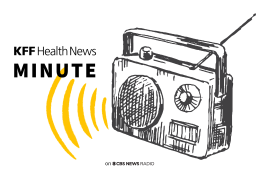After Budget Cuts, New York City’s Infant Death Rates Rise
The New York City neighborhoods of Harlem and Fort Greene saw rising infant mortality rates in 1999, prompting politicians to call for the restoration of federal funding for the Healthy Start program, credited with previous death rate reductions, the New York Times reports. According to statistics recently released by the city's Department of Health, the city's overall mortality rate of infants under the age of one increased from 6.8 deaths per 1,000 births in 1998 to 6.9 in 1999, a 1.5% rise and the first increase since 1988. The increase was most pronounced in the Manhattan neighborhood of central Harlem, which saw a rise from 11.4 deaths per 1,000 births in 1998 to 15.8 in 1999, and the Brooklyn neighborhood of Fort Greene, which had a 10.8 rate in 1999, up from 8.8 in 1998, increases of 39% and 23%, respectively. City Council members Bill Perkins and Herbert Berman and Manhattan borough president C. Virginia Fields on Feb. 4 said they would ask the federal government to increase funding for the "widely acclaimed" Healthy Start program, which "provides prenatal care, home nursing visits, medical referrals and other services for pregnant women and infants" (Lipton, New York Times, 2/5). Beginning in 1991, the program helped to reduce central Harlem's infant mortality rate to 6.6 in 1997, the New York Post reports. But later that year, the paper says, federal funds were "redistributed" around the country, leading to a loss of funding in New York City and the beginning of an "upward spiral" in Harlem's infant mortality rate. "What is clear is that there is [a] direct correlation between the funding (cuts) and the (mortality rate) increase. It's unfortunate that the funding was shifted and the efforts to get it back were not successful," Perkins said (Edozien, New York Post, 2/3). Perkins, Berman and Fields said they also will ask the City Council and Mayor Rudy Giuliani (R) to allocate $3 million in annual funding for prenatal services (New York Times, 2/5).
This is part of the Morning Briefing, a summary of health policy coverage from major news organizations. Sign up for an email subscription.





